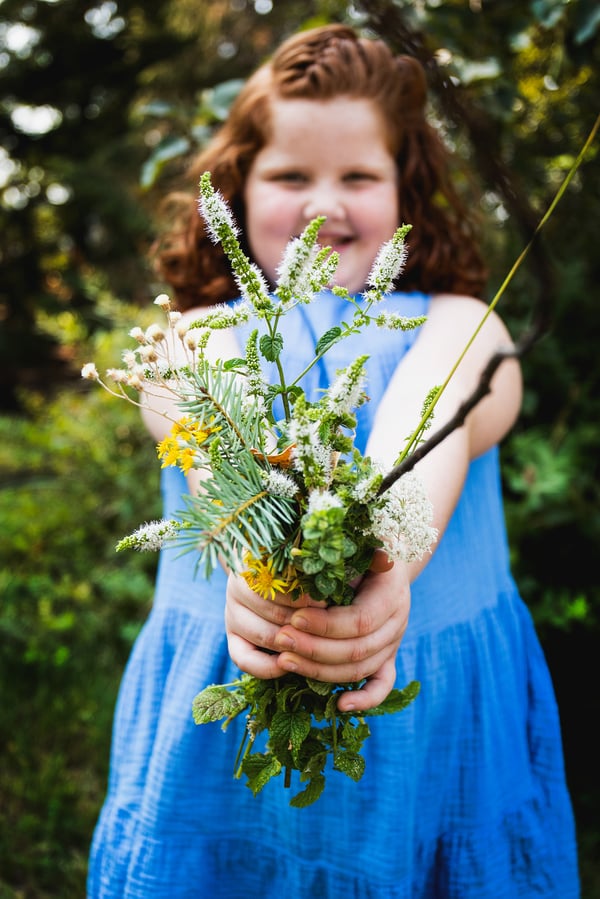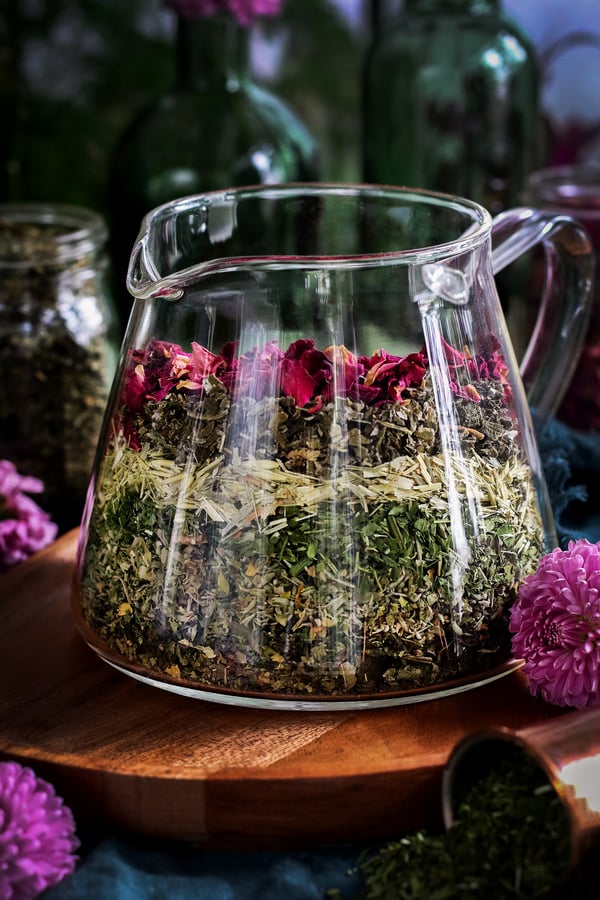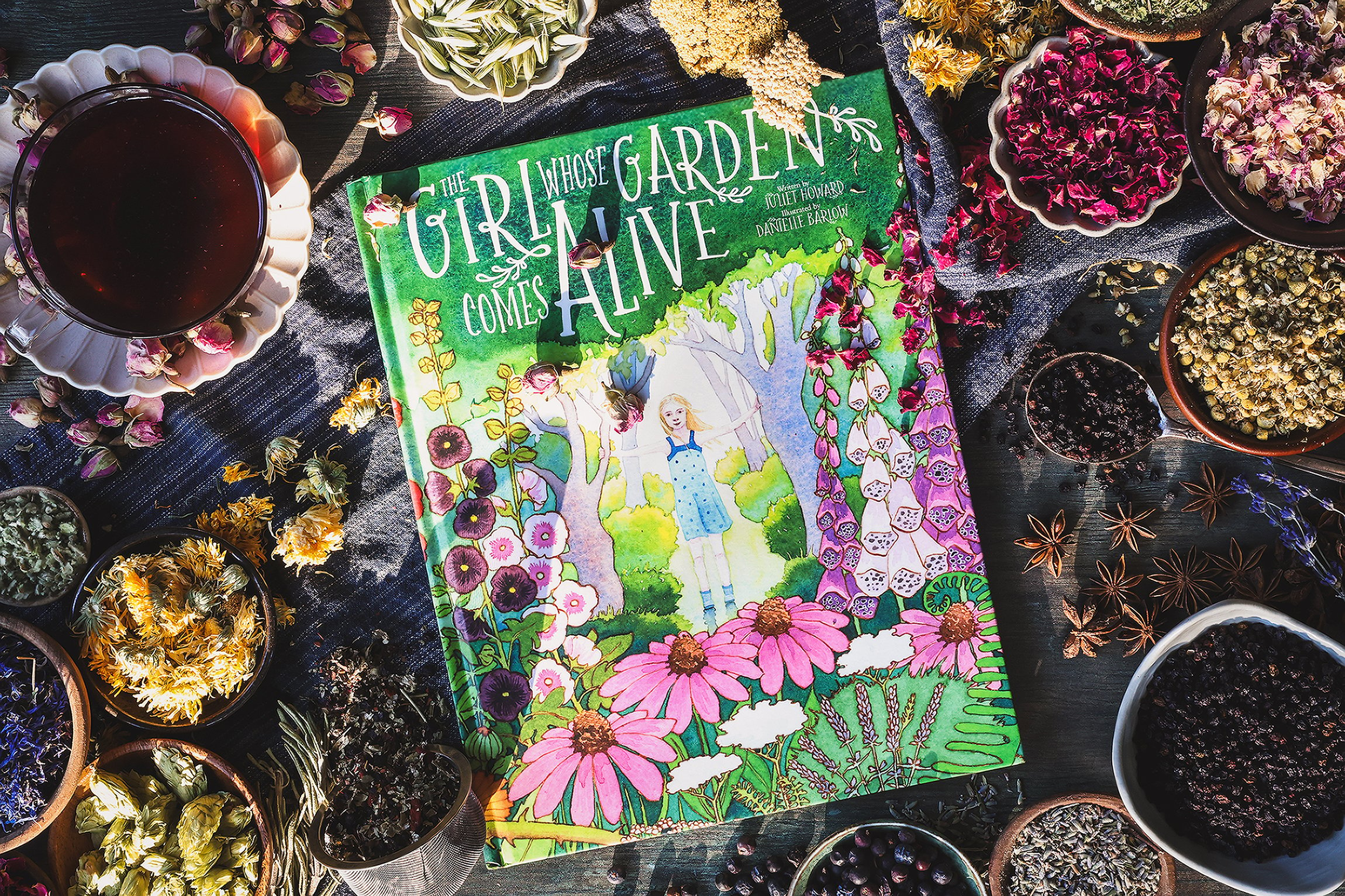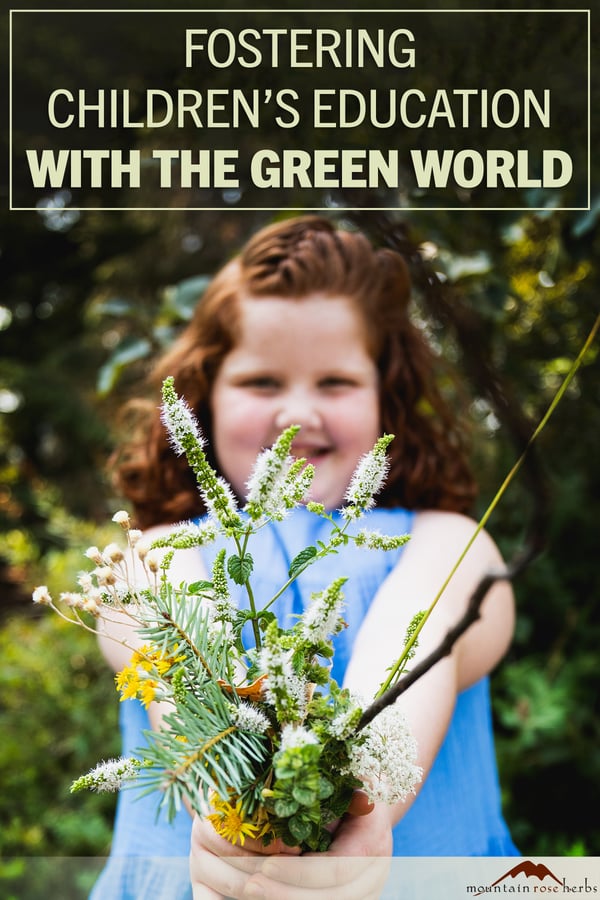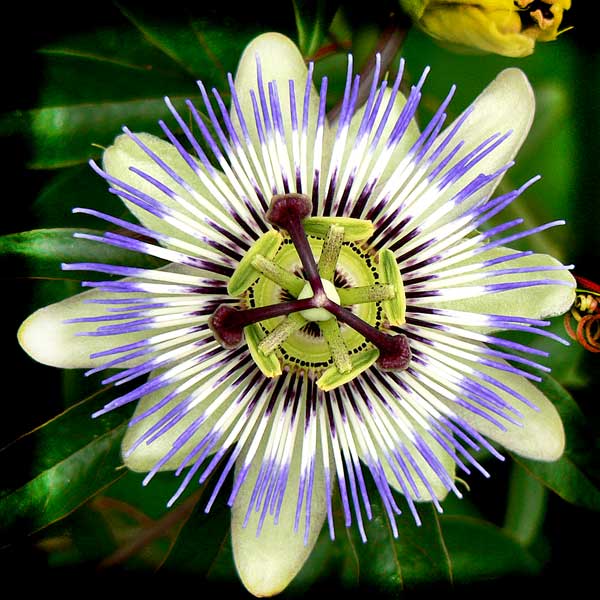Opening children up to a world of wonder, nourishment, and magic can be as simple as introducing them to the plants that grow in your backyard. Learning how to sink in, slow down, and listen to the plants is both inspiring and grounding.
But, how do we begin to listen?
Communicating with a plant isn’t like communicating with a person. Plants communicate in their own special way. A sunflower turns toward the sun, a St. John’s wort flower leaves a crimson red stain on your fingers when you squeeze it, echinacea’s purple petals attract pollinators, and a dandelion opens in the morning and closes in the evening. Flowers find so many different ways to communicate.
Getting to know a plant isn’t quite the same as getting to know a person, but there are some commonalities: It’s important to spend time together, engage in reciprocity, and listen with an open heart.
Having my own deep relationship with the plants felt like an invitation to foster this relationship for my daughter. As a toddler, she was crawling around in the grass, picking dandelions and red clover blossoms, and grabbing rose petals to put in her mouth. When she got her first bee sting, we immediately found plantain to help soothe her discomfort. Anytime she had a rash, we placed her in a bath of calendula and oats to soothe the irritation. Now, at 6 years old, when she scrapes her knee and starts bleeding, she knows to run to yarrow and make a quick spit poultice. This relationship she has with the green world is not only inspiring, but it’s empowering. I know that she will never feel alone in this life and that she has the tools and the wisdom to take care of herself — to nourish, heal, and deeply connect with the help of her plant friends. This feels like one of the best gifts I can give to her as a parent.
If you feel inspired to start fostering a deep connection between your child(ren) and the plants, read on for some simple practices you can do together.
Make Your Own Luminary Tea
One simple way to connect with plants is through your senses of smell, touch, and taste. If you have any herbs growing nearby, you can make your own special sun or moon tea. First, you’ll want to gather any edible flowers or herbs that are growing in your garden or that you have in your home apothecary. You can gather roughly a handful and place it in a pint-sized glass jar. Next, you’ll fill the jar with spring water and let it steep in the sunshine or moonlight for a few hours. If you’re making a sun tea, you’ll want to strain the tea when the jar is warm and the water has changed color. If you’re making a moon tea, you can leave the jar infusing in the moonlight overnight. Feel free to add a bit of muslin or a lid if you don’t want any critters or leaf debris to end up in there.
Luminary teas let you capture the energy of the sun or moon, along with the plants you are infusing. A sun tea harnesses the strength and vibrancy of the sun, while a moon tea captures the subtle, dreamy, shadowy aspects of the moon.
You can also choose herbs that correspond with the sun, like calendula or rosemary or herbs that correspond with the moon, such as marshmallow root, lavender, or mugwort.
This is such a fun practice to do with children because they are often able to do all of the steps themselves and then they get to enjoy the fruits of their labor.
Create a Sit Spot
Maybe it’s under a giant oak tree, or next to a patch of verdant ferns. Maybe it’s among a field of blooming sunflowers, or next to an aromatic rose bush. Whatever space calls to you is a space worth creating your own sit spot.
When you see a plant, tree, or outdoor space that you enjoy, take a moment to sit down nearby, close your eyes, and breathe. When you inhale, know that the plants and trees are providing you with oxygen. And when you exhale, you are providing the plants and trees with carbon dioxide. You can begin to imagine this cyclical process—your exhale becomes the plants inhale, and the plants exhale becomes your inhale. This reciprocal relationship has been going on since the beginning. Plants and trees literally give us our air to breathe!
Taking a moment to sit and breathe with a plant invites in a slowing down and a true reverence for the green world around us. You can visit this spot over and over again and in time, you will develop a relationship with this plant or tree and begin to feel resonance with this being. And, even a friendship. You can journal, ask questions, or just be. It is a meditative and grounding practice to develop and you may even make a plant friend along the way!
There are so many ways to begin to connect with plants. Through cooking, gardening, art, music, gathering… the ideas are endless! The plants provide nurturance, nourishment, kinship, and a true sense of belonging. When you know the plants, you’re never alone. Wishing you many beautiful moments among the green.
Want More Ways to Inspire The Next Generation?
Check Out The Girl Whose Garden Comes Alive!
- Homemade Colored Play Dough Recipe with Herbs
- How to Make Slime with Psyllium Husk
- 9 Herbal Activities for Kids

